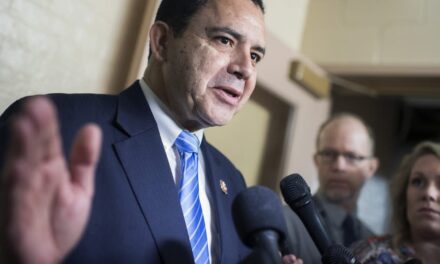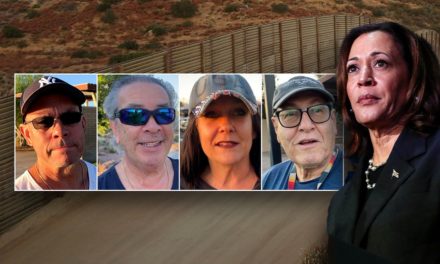As the nation turned its attention to the new administration, the first 100 days of Donald Trump’s presidency were punctuated by a series of memorable media moments and confrontations that would set the tone for the years to come. The approach of the Trump administration, characterized by a unique relationship with mainstream media, resulted in significant clashes and highlighted the changing landscape of American journalism.
One of the most notable media events occurred on January 21, 2017, regarding the size of the crowd at Trump’s inauguration. Kellyanne Conway, then-counselor to the president, controversially defended Trump’s claim that the event attracted the largest audience in history, a statement widely disputed by photographic evidence and media reports. This episode set the stage for an ongoing narrative throughout Trump’s presidency, often referred to as the “alternative facts” moment, which would draw widespread criticism and skepticism towards the administration’s claims.
Following this moment, the administration’s contentious relationship with the press was epitomized by the frequent use of terms such as “fake news” and “enemy of the people” to describe major news organizations. Trump’s use of these phrases ignited a widespread debate about the role of the press in a democracy and raised concerns about the implications for journalistic integrity and freedom of the press.
Another prominent incident occurred during a press conference held on February 16, 2017, in which Trump had a fiery exchange with CNN reporter Jim Acosta. In a display of tension, Trump dismissed a question from Acosta about the administration’s ties to Russia, labeling CNN as ‘fake news’ and attacking the credibility of the outlet. This confrontation was widely covered and marked a significant turning point in the dynamics between the Trump administration and the press, highlighting the president’s antagonistic stance towards outlets that questioned him.
In the month of March, Trump’s contentious press briefings continued to make headlines. Sean Spicer, then-White House Press Secretary, faced backlash after he asserted that Americans “had a right to know” what was happening behind closed doors in the White House. When pressed on issues surrounding transparency, Spicer often deflected questions and struggled to clarify the administration’s stance, leading to heightened tensions between journalists and the press team.
As the administration faced various challenges, from the fallout of the travel ban executive order to controversies surrounding healthcare reform, the discourse grew increasingly heated. The travel ban, which aimed to restrict immigration from several predominantly Muslim countries, sparked widespread protests and legal challenges. The administration’s initial communication regarding the ban was met with scrutiny, and the subsequent press conferences added fuel to the fire as officials struggled to explain both the intent and implications of the order.
In April 2017, Trump found himself embroiled in yet another media controversy following an interview with ABC News anchor David Muir. In this interview, Trump insisted that his administration did not leak sensitive information, despite numerous high-profile reports indicating otherwise. His claims were met with skepticism from various quarters, further illustrating the strained relationship between his administration and the media, which many believed was vital for accountability.
Perhaps one of the most telling moments of Trump’s early presidency related to his administration’s handling of the Russian interference investigation, which began to surface in early 2017. On May 9, Trump dismissed FBI Director James Comey, a move that he later attributed to the investigations into Russian interference in the 2016 elections. This unexpected action sparked significant media coverage, with many outlets questioning whether the firing was an attempt to obstruct justice. The ensuing coverage revealed the media’s intensified focus on transparency, accountability, and ethical governance—a focus that continued to shape the discourse surrounding the Trump administration.
Alongside these controversies, Trump’s use of social media, particularly Twitter, became a defining aspect of his communication style. From the moment he took office, he utilized Twitter to announce policy changes, comment on news stories, and engage directly with the public. This direct line of communication, bypassing traditional media channels, fundamentally altered the nature of presidential communications and brought forth discussions regarding the implications of such an approach on political discourse and media credibility.
By the end of the first 100 days, the Trump administration had established a pattern of engagement that frequently furthered the divide between the government, the press, and the public. The term “fake news” gained traction and was often used by Trump to discredit reports that he deemed unfavorable. This narrative not only criticized the work of journalists but also sowed distrust among the public towards the media. The administration’s strategy of labeling dissenting outlets as biased attracted a fervent base of followers who rallied around this messaging, exacerbating the polarization in American society.
With numerous polarizing events unfolding and the media’s role in scrutinizing them, it became evident that the Trump administration’s first 100 days were marked by a departure from previous norms of presidential communication and media engagement. As journalists adapted to cover unprecedented challenges, the relationship between the executive branch and the press was placed under heightened scrutiny and stress.
As these media stories and confrontations continued to unfold, many industry analysts speculated about the long-term ramifications for journalism and democratic discourse. The role of the press as a watchdog and trusted source of information was challenged, as the Trump administration consistently questioned the motives and accuracy of major news organizations. With each press conference and tweet, the foundational principles of accountability and transparency were put to the test.
In hindsight, the media highlights and clashes during Trump’s initial days in office not only shaped the narrative of his presidency but also foreshadowed the ongoing struggles in American journalism. The evolving relationship between the Trump administration and the media served as a catalyst for discussions about press freedoms, the role of technology in news dissemination, and the necessity for credible journalism in an increasingly polarized environment.
As the Trump presidency progressed beyond its first 100 days, the tensions between the administration and the media persisted. Each incident built upon the last, contributing to a larger narrative that questioned the implications of a democratic society and the role of the media within it. Looking back, these media moments became pivotal in understanding not only the Trump presidency but also the historical context of media’s role in shaping public perception, accountability, and trust in government.
In conclusion, the initial 100 days of the Trump administration were defined by significant media moments that shaped the relationship between the president and the press. The clashes, controversies, and characterizations that emerged during this time not only affected public perception but also redefined the landscape of journalism in America. As these issues continue to evolve, the lessons learned from this period serve as a reminder of the critical importance of a free and responsible press in maintaining democratic values.
































